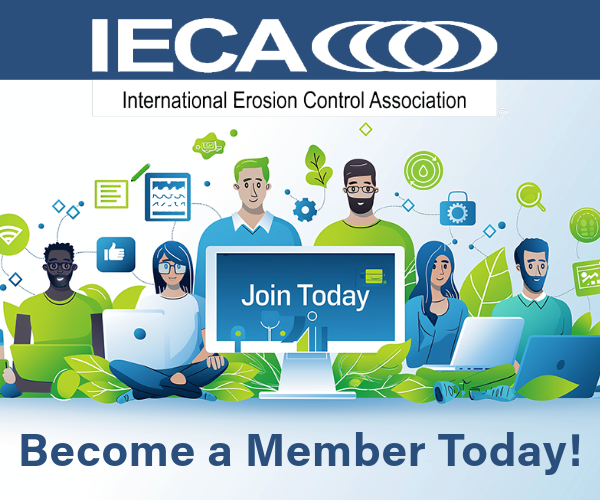
Let’s Talk Floc New Zealand: aPAM Flocculant Solutions for Water Treatment and Erosion & Sediment Control
-
Register
- Non member - $40
- Professional member - $15
- Professional Plus member - Free!
- Professional Plus Org member - Free!
- Student member - $15
- Young Professional member - $15
- Emeritus member - $15
- Discounted Professional member - $15
- Australia Member - $15
- Australia Non-Member - $40
- Australasia Professional Plus - Free!
- Australasia Professional Plus Org - Free!
- Australian Student - $15
Let’s Talk Floc New Zealand
aPAM Flocculant Solutions for Water Treatment and Erosion & Sediment Control
Presented by: Kyla Iwinski-Wood, PhD, VP R&D, Applied Polymer Systems, and Blair Gray, Principal Environmental Consultant / Director EnviroCo Ltd
Level: Intermediate
Duration: 1 hour
Type of Course: Webinar - On demand
Flocculants are powerful tools that have been used globally for decades to preserve and restore our water resources. Commonly used in mining and mineral processing, municipal and wastewater treatment, and agriculture, flocculants have also become a staple for construction and stormwater treatment. Today, flocculant treatments are regularly used for erosion control, soil stabilization and the removal of harmful stormwater contaminants such as sediment, nutrients, and metals. Although there are many types of flocculant and coagulant treatments available, anionic polyacrylamide (aPAM) is the most widely used and accepted due to its safety to aquatic organisms, efficacy in reducing turbidity, and versatility in treatment applications. aPAM technologies have the ability to achieve low TSS/NTU levels that conventional best management practices cannot. Over 70 years of research and use of aPAM technologies has shown turbidity reduction up to 95 percent. Due to the numerous benefits of aPAM usage, New Zealand has recently adopted aPAM technologies as an approved practice to protect soil and water during and after earth moving activities. This webinar will discuss the history, use and benefits of aPAM technologies, regulations, and examples of aPAM technologies recently used in New Zealand. It will discuss current projects and uses that have been completed or are ongoing within the region and future usage.
Learning outcomes:
1. Recognize what aPAM is and how it can be used to treat water, stabilize soil and enhance BMPs
2. Understand the safety and efficacy of aPAM flocculants as well as other chemical treatments
3. Identify the current role and implementation of aPAM technologies in New Zealand and how they may be used in the future to protect and restore New Zealand's natural resources

Blair Gray
Principal Environmental Consultant / Director EnviroCo Ltd
Enviroco
Blair Gray has gained a wealth of experience and expertise in environmental consultancy and management over his two-decade-long career.
After completing his MSc. in Marine Science, Blair started out working in various aquaculture roles. He followed on as a Senior Resource Management Officer at Environment Canterbury, providing training and guidance to staff in resource consent compliance as well as stormwater and erosion sediment controls.
Ten years ago, Blair embarked on a new chapter, establishing Environmental Compliance Services Limited t/a EnviroCo. Here, Blair leads a team of environmental consultants, specialising in various fields.
Blair has obtained the internationally recognised qualification of CPESC as well as CEnvP. He continues to research and innovate more refined ways to treat construction phase stormwater run-off with a view to minimise adverse environmental effects while maximising progress and development.
Kyla J. Iwinski-Wood, PhD
VP Research and Development
Applied Polymer Systems, Inc.
Kyla Iwinski-Wood is an environmental toxicologist with a passion for clean water and applying science to find real world solutions. She works for Applied Polymer Systems where her primary roles are researching new or improved polymer uses and technologies as well as assisting with technical training, support, and presentations. She worked as a consultant for APS beginning in 2007 until accepting a permanent position as head of Research and Development in 2016. She holds a PhD from Clemson University where her doctoral work focused on water resource management and ecotoxicology. She also has a master’s degree in biology from Northern Michigan University where she investigated the feasibility of polyacrylamide for removing nuisance and toxic algae from freshwater.
This event is worth one (1) Professional Development Hour.
IECA is committed to fostering an environment of continuous learning and professional growth. Through a process of peer review and content selection standards, we ensure that our content is robust, relevant, and aligns with industry standards. We respect the authority of certification organizations to evaluate and accept professional development activities according to their criteria, acceptance of professional development credits is at the discretion of your certifying organization.
* EnviroCert International has listed this webinar as acceptable professional development.



